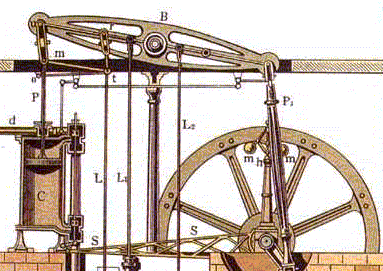|
Back
Dale W. Jorgensen (1963, 1967, 1971) proposed a different investment theory which was derived, in part, from the Fisher-Hirshleifer theory. Let output at any particular time be related via some production function to labor employed (N) and existing capital stock: Y = F(N, K)Letting total revenues be pY then costs are wN and sI where s is the price of a unit of capital. Net proceeds at time t are (suppressing time subscripts henceforth): R = pY - sI - wNso that the value of the firm is merely the discounted stream of earnings: V = ̣ 0¥ Re-rt dt = ̣ 0¥ [pY - sI - wN] e-rt dtGross investment is defined as: I = dK/dt + dK where d is the depreciation rate. Following the Fisherian lead, the objective of the firm is to maximize net present value, thus the optimization problem is: max V = ̣ 0¥ [pY - sI - wN] e-rt dt s.t. Y = F(K, N) = 0 for some initial capital stock, K0. Forming a current-value Hamiltonian:dK/dt = I - d K H = pF(K, N) - sI - wN + l (I - d K)where l is the current-value costate variable representing the shadow price of capital. The first order conditions for the optimal capital path, using employment N and investment I as control variables and K as our state variable are: dH/dI = -s + l = 0 dH/dN = pFN - w = 0 - dH/dK = dl /dt - rl = - pFK + l d dH/dl = dK/dt = I - d KObviously, the second condition implies that FN = w/p, i.e. labor is employed until the marginal product of labor is equal to the wage. From the first equation, we see that, s = l , thus ds/dt = dl /dt. Thus: ds/dt - rq = -pFK + sdor: pFK = s[d + r - (ds/dt)/s]But recall that FK = dY/dK, thus the marginal product of capital is: FK = s[d + r - (ds/dt)/s]/pNow, it might be useful to define Jorgensen's "real user cost of capital" as c = s[d + r - (ds/dt)/s] thus: pFK = ci.e. the firm reaches an equilibrium level of capital stock when the value of the marginal value product of capital (pFK) is equal to its implicit rental rate (real user cost, c). The logic of c is simple: the rent on a unit of capital must cover the opportunity cost of lending it out (r), depreciation per unit (d ) minus the expected capital gains (ds/dt)/s. If we had an explicit and invertible production function, then the optimal capital stock K* could be determined easily from FK = c/p. For instance, suppose we had a Cobb-Douglas function Y = Ka L(1-a ) so that FK = a (Y/K), then K* = pa Y/c. Thus, in general K* = ¦ (Y, p, r, d , s, ds/dt, p) or simply K* = ¦ (Y, p, c) where K* depends positively on Y and p and negatively on c. This is fine for optimal capital stock, but how does one obtain investment? Investment is defined as the instantaneous change in the optimal stock of capital, thus, in principle, there is no investment unless there is some reason to change the optimal stock of capital (by say, imposing exogenous some rate of technical change or some population growth rate) or, alternatively, investment is derived from the adjustment path towards the optimal capital stock, K*. Following the first case, suppose that Kt* ¹ Kt+1* for some reason. Then, in principle, moving to continuous time, from any given K, then investment is defined as I = dK* + d K, thus: so investment is a function of changes in the real user cost of capital (dc) (which in turn depend positively on changes in r, s, p and negatively on changes in (ds/dt)/s), changes in output (dY), changes in the price of output (dp) and the level of capital (K). Of course, Jorgensen's (1963) theory is less about investment and more about optimal capital. If investment, as Friedrich Hayek (1941) and Trygve Haavelmo (1960) argued, is seen as the adjustment from a given level of capital to the optimal level of capital stock, then, in Jorgensen, investment is instantaneous. To obtain investment, then, Jorgensen subsequently added controversial delivery lags. Jorgensen proposed that only a fraction l0 of the investment goods ordered in the current period are delivered in a current period, fraction l1 delivered in the next period, fraction l2 in the period after that and so on. As a result, actual investment (or actual change in capital stock) at any time period t is the sum of the proportion of past desired investment that will be delivered at t, specifically: It = l0 DKt* + l1 DKt-1* + .... + ln DKt-n*so that actual investment It at time t is some weighted function of desired movements to the optimal capital stock in the previous n periods, DK*t-i for i = 0, .., n which are delivered at time t. This structure proved highly controversial in the literature, e.g. Eisner and Strotz (1963), Eisner and Nadiri (1968), not only for its ad hoccery but also because it makes Jorgensen's theory untestable empirically because not only does it lead to autocorrelated error terms but also it becomes virtually indistinguishable from accelerator theories of investment. As a result, Jorgensen's theory of investment, which relies heavily on prices as independent variables, usually performs rather poorly at the empirical level. |
All rights reserved, Gonçalo L. Fonseca

